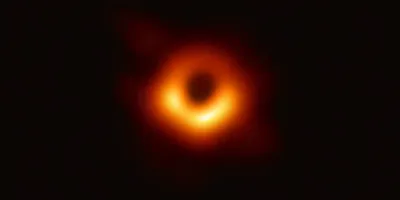In April 2019, the scientific community achieved an extraordinary milestone with the first-ever direct image of a black hole, located in the galaxy M87, nearly 55 million light-years away from Earth. This monumental discovery marked a historic moment in astrophysics, validating decades of theoretical work and opening a new chapter in our understanding of the universe.
Black holes are enigmatic cosmic phenomena predicted by Albert Einstein’s theory of general relativity. These celestial entities possess such immense gravitational pull that nothing, not even light, can escape from their grasp, rendering them invisible to conventional observation techniques. Despite their theoretical existence, the inability to directly observe black holes presented a significant challenge to astronomers.
The Event Horizon Telescope (EHT), an international collaboration of scientists, embarked on a groundbreaking endeavour to capture the first image of a black hole. By synchronizing radio telescopes across the globe, the EHT effectively created a virtual Earth-sized telescope capable of peering into the depths of the cosmos with unprecedented resolution.
The black hole in M87, with a mass equivalent to 6.5 billion times that of the Sun, was the prime target of the EHT’s observations. The resulting image revealed a striking silhouette—a dark, circular region encircled by a luminous ring of hot gas swirling at nearly the speed of light. This distinctive “shadow” confirmed the existence of the event horizon, the boundary beyond which nothing can escape the black hole’s gravitational grip.
The significance of this achievement extends far beyond its visual impact. The observed properties of the M87 black hole provided crucial insights into the fundamental nature of these cosmic behemoths. The image confirmed predictions about the behaviour of light near a black hole and offered empirical evidence supporting Einstein’s theory of general relativity in extreme gravitational environments.
Moreover, the black hole’s mass and luminosity shed light on the intricate processes governing galaxy formation and evolution. Understanding the role of supermassive black holes like M87’s in shaping the dynamics of their host galaxies is essential for unravelling the cosmic web of structure formation in the universe.
The successful imaging of the M87 black hole represents a triumph of human ingenuity, collaboration, and technological innovation. It exemplifies the relentless pursuit of knowledge and the insatiable curiosity that drives scientific inquiry. Furthermore, it underscores the profound interconnectedness of humanity and the cosmos, reminding us of our place in the vast tapestry of the universe.
As we continue to explore the mysteries of the cosmos, the discovery of the M87 black hole serves as a beacon of inspiration, fueling our collective quest to unravel the secrets of the universe and deepen our understanding of the fundamental laws that govern its existence.
newshub











Recent Comments